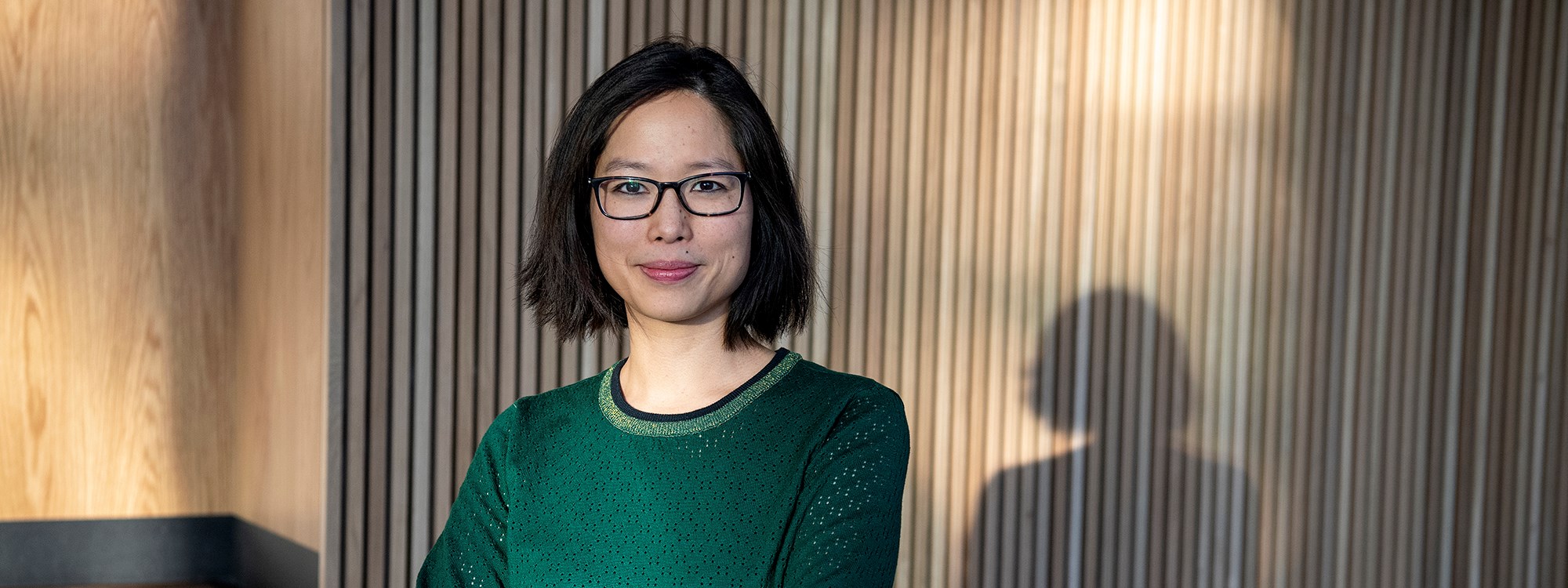
The pandemic is changing how we make new contacts
According to the international network CEMS, being more personal and showing a greater interest in other people’s lives is now order of the day. ‘Don’t be afraid to show toys lying around,’ says a researcher at NHH.
The global network – CEMS Global Alliance – has made ten guidelines for helping managers to create and maintain global networks in an ever more digital world.
‘All of the tips are already familiar to us; it’s all about socialisation, empathy and being a decent fellow human being. When the pandemic started, our main concern was being able to work efficiently from home, but this was at the expense of our relations with colleagues and we lost important arenas, like having a chat with a colleague by the coffee machine. We have recently been reminded that our jobs are also important in social terms,’ says Associate Professor Annelise Ly at the Department of Professional and Intercultural Communication.
Ly is an expert in intercultural business communication and how cultural differences affect cooperation and leadership across cultures. The French researcher teaches global management at NHH, and has conducted field studies in China, South Korea, India, France and Norway, among others.
The 10 CEMS guidelines for networking:
- Empathy is key to future networking.
- Focus on deepening existing relationships.
- Networking isn’t a race – it is a long slow build.
- Showcase your authentic self. Try to call in earlier in the meeting and use the time to get to know your team-mates.
- Take charge, be courageous and lead the change. We are moving from an organizational hierarchy into networks where interactions and collaboration take place across levels, borders and functions.
- Be someone others like to be around, work with and turn to.
- Give, don’t just take.
- Do your homework to remain relevant. Make it your business to keep abreast of current trends in your field of interest, your industry and within your organisation.
- Be genuinely interested. It has long been said that to be considered interesting, you need to be interested!
- Seize opportunities to build your network outwards.
‘Have to think differently’
Ly points out that we have to think differently with respect to digital communication, and we cannot simply keep doing what we have always done. Three-hour meetings are no longer the order of the day.
‘Meetings should involve as much dialogue as possible, so don’t spend time reading reports that your colleagues could have read in advance. To replace the important chat by the coffee machine, it’s a good idea to set aside time for socialisation, either before or after the meeting, where you can talk about this and that. You should also always have the camera on, and get rid of your background filter, she says and elaborates:
‘Talking about what’s around you can be a good way of breaking the ice. For example, I have an artwork of streets in Paris behind me now. When I’m in a meeting with people I don’t know that well, the picture often gets us talking about Paris or France. You shouldn’t be scared of showing that there are toys around you or that someone suddenly appears in the background. The formal aspects of the meeting must naturally be in place, but we don’t need to be so formal with each other. Digital meetings have long been the only type of socialisation available to many people, so it’s important to show that we’re humans.’
Easier to engage in international networking
Ly believes that more digital platforms have made it easier to make new contacts both nationally and internationally. She emphasises that we now spend less time travelling and can take part in more activities than we used to. Ly uses an example from her own life to illustrate this point: one day before summer, she attended a conference in Paris in the morning, gave a lecture in Newcastle after lunch before picking up her children in Bergen.
‘The threshold for calling someone on Teams is higher than knocking on someone’s office door, but our international, or Norwegian, network is closer than ever before. Conferences now facilitate virtual meeting places and set aside time for socialisation. I’ve also noticed that it’s easier to get international researchers to be guest lecturers.’
‘What do you think networking will be like after the coronavirus?’
‘I think the new normal will be a combination of both solutions – both physical and digital meeting places. At the start of the pandemic, we mainly saw the limitations of digital communication, but now we’ve learned that it also provides a lot of opportunities. We’ve lived in the new normal for a while now, so the habits we’ve developed have stuck and many of them are here to stay.’